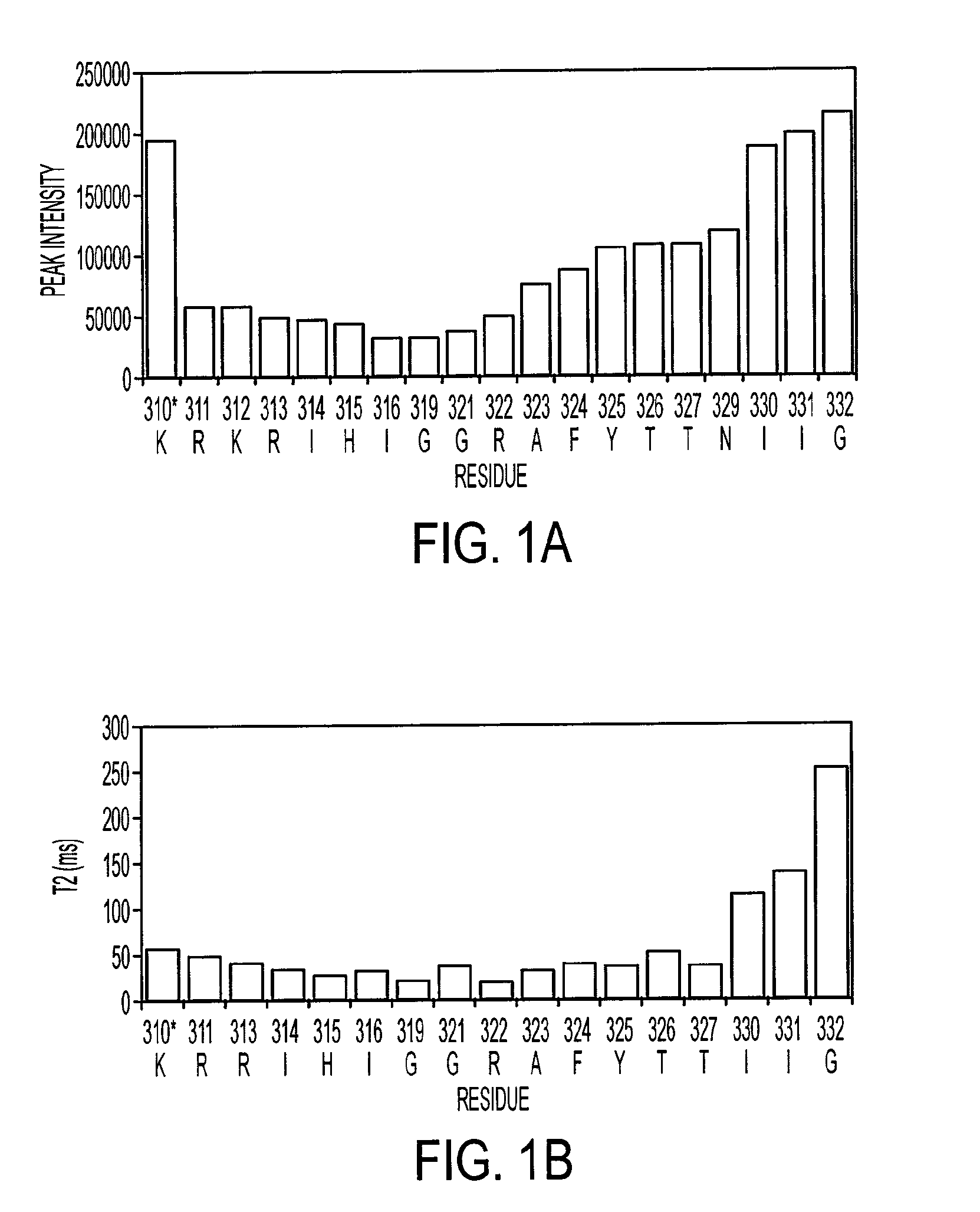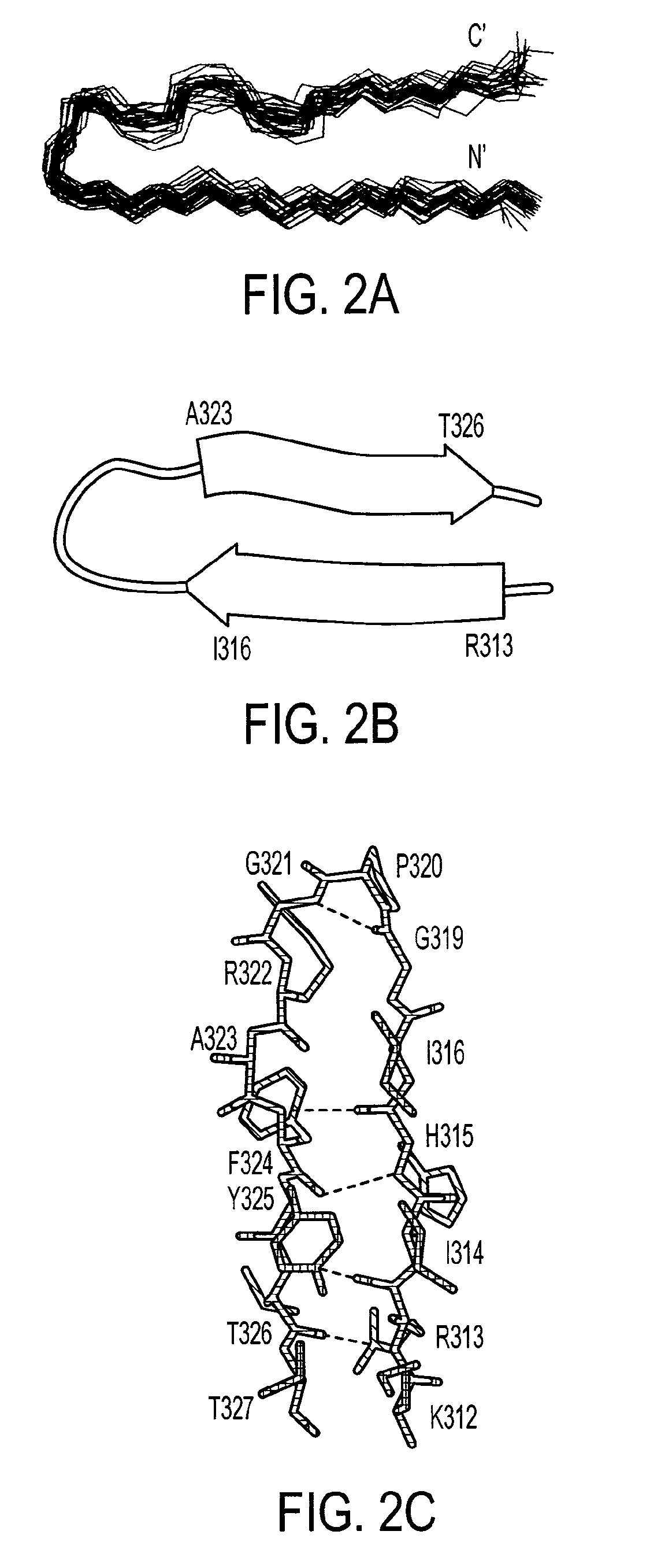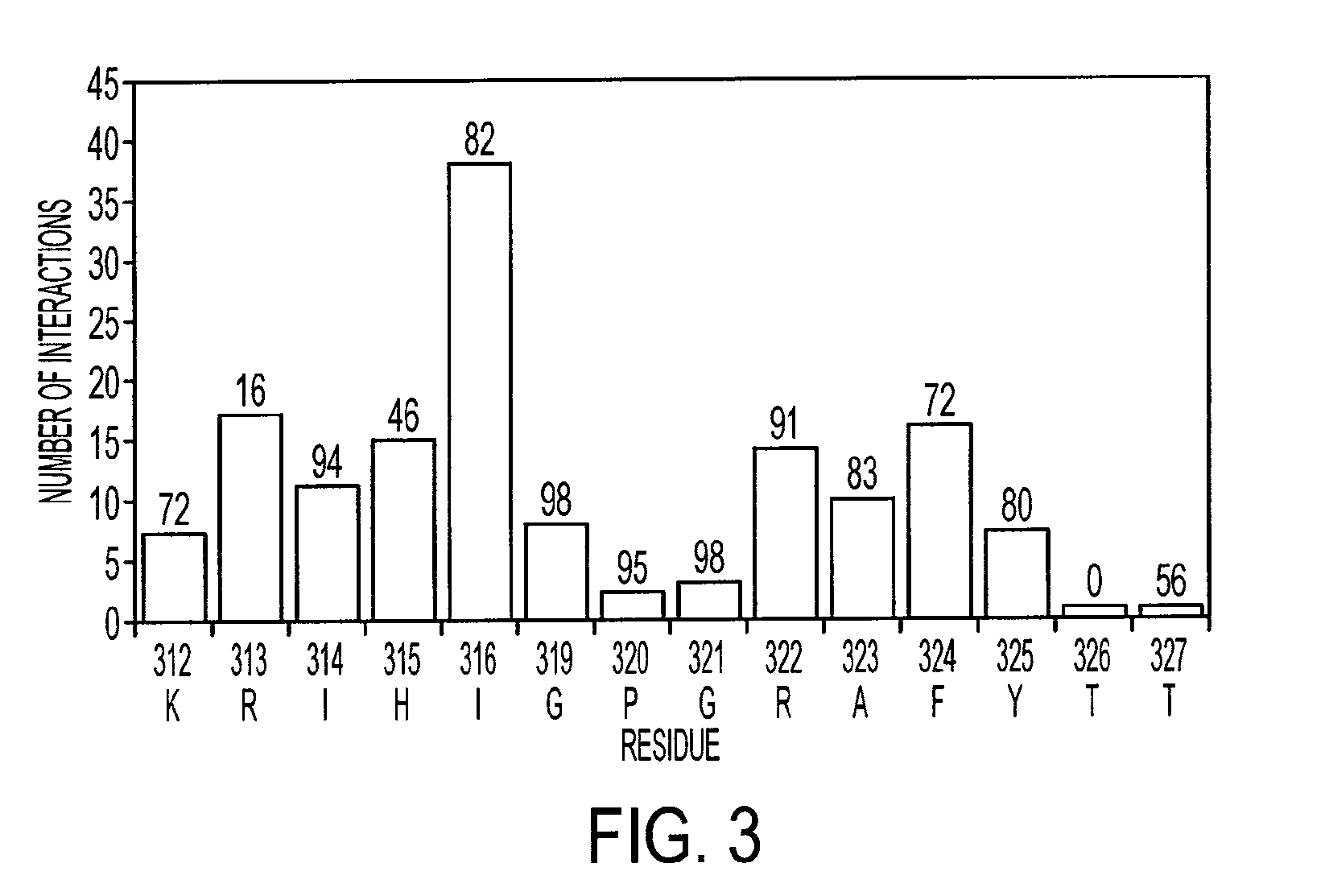Constrained HIV v3 loop peptides as novel immunogens and receptor antagonists
a hiv v3 loop, novel immunogen technology, applied in the direction of peptides, viruses, cyclic peptide ingredients, etc., can solve the problem that the peptides do not permit the determination of the global conformation of the v3sub>mn/sub>loop, and achieve broad neutralizing activity and potent
- Summary
- Abstract
- Description
- Claims
- Application Information
AI Technical Summary
Benefits of technology
Problems solved by technology
Method used
Image
Examples
example i
Experimental Procedures and Materials
[0187]Note on letter / number codes: The MN or IIIB superscript preceding the single letter amino acid code indicates the HIVMN or HIVIIIB strain origin of the sequence; the number following the amino acid code represents the position of the residue in the full length gp120MN or gp120IIIB sequence. The number is sometimes followed by the position of the hydrogen (H) involved in the hydrogen bonding—i.e., an amino hydrogen (HN) or a hydrogen atom bonded to the α carbon (Hα)
[0188]The V3MN peptide, 308-332gp120MN (YNKRKRIHI—GPGRAFYTTKNIIG; SEQ ID NO:13) linked to a fusion protein was expressed in E. coli, cleaved and purified as previously described by M. Sharon et al. (2002) Protein Expr. Pur 24:374-383.). Note that the sequential numbering system in V3MN is interrupted due to a rare two residue insertion in HIV-1IIIB and therefore residues 317 and 318 are not present in V3MN. The 447Fv was expressed in BL21(DE3)pLysS strain.
[0189]T...
example ii
Mapping the V3MN Epitope
[0202]NMR dynamic filtering was used to map the epitope within the V3 peptide recognized by the 447Fv. Peptide protons that do not interact with the Fv retain considerable mobility in comparison to peptide protons which do interact. As a result of the long mixing period used in the HOHAHA and ROESY spectra, the cross peaks of peptide protons interacting with the Fv as well as of most Fv protons vanish while the cross peaks of residues in the flexible parts of the peptide that do not interact with the Fv continue to be observed. These include seven residues of the C-terminal region (MNT326-MNG332) and two of the N-terminal segment (MNN309, MNR311). The proton chemical shifts of these residues were practically identical to those observed for the free peptide, confirming that they do not interact, or have only very minor interactions with the antibody. The HOHAHA cross-peaks of MNK312-MNR322 were undetectable in the spectra, implying strong interactions with 447...
example iii
Solution Structure of the Antibody-Bound V3MN Peptide
[0204]The structure of the bound V3MN epitope was determined using 305 NMR-derived distance (90 long and medium range), 10 dihedral angle and 2 hydrogen bonds constraints. The superposition of the 29 lowest energy structures that satisfied the experimental restraints with no NOE violations larger than 0.5 Å and no torsion angle violations exceeding 5° is shown in FIG. 2A. The overall structure of the epitope (312-327gp120) is well defined with root-mean-square deviations (rmsd) values of 0.37 Å and 1.17 Å for the backbone and heavy atoms, respectively. The structural statistics and rmsd are presented in Table 1. A Ramachandran plot (not shown) of the mean structure of the complex suggests that the φ and ψ angles of the structure predominantly occupy allowed regions except for MNG319 and MNG321.
[0205]The average NMR coordinates for the V3 MN peptide as bound by and constrained by the 447Fv antibody fragment are shown in Table 3. Th...
PUM
| Property | Measurement | Unit |
|---|---|---|
| dissociation constant | aaaaa | aaaaa |
| molecular weight | aaaaa | aaaaa |
| nuclear magnetic resonance | aaaaa | aaaaa |
Abstract
Description
Claims
Application Information
 Login to View More
Login to View More - R&D
- Intellectual Property
- Life Sciences
- Materials
- Tech Scout
- Unparalleled Data Quality
- Higher Quality Content
- 60% Fewer Hallucinations
Browse by: Latest US Patents, China's latest patents, Technical Efficacy Thesaurus, Application Domain, Technology Topic, Popular Technical Reports.
© 2025 PatSnap. All rights reserved.Legal|Privacy policy|Modern Slavery Act Transparency Statement|Sitemap|About US| Contact US: help@patsnap.com



